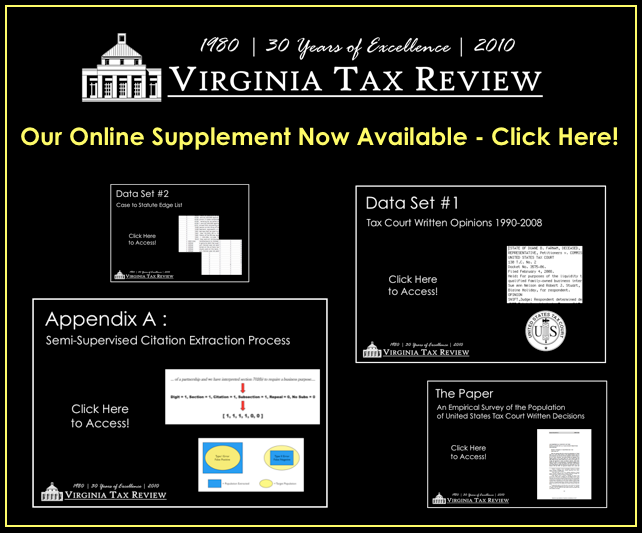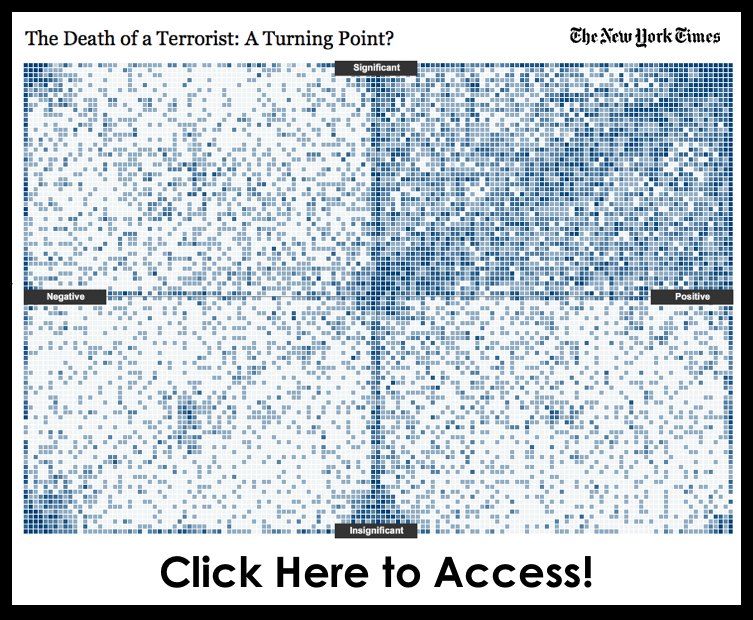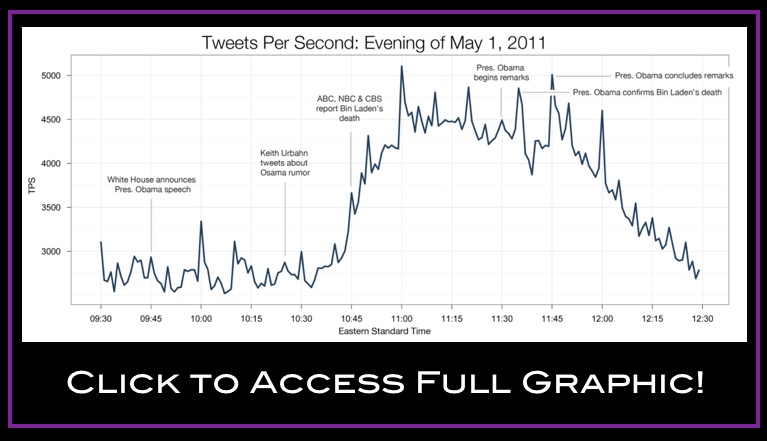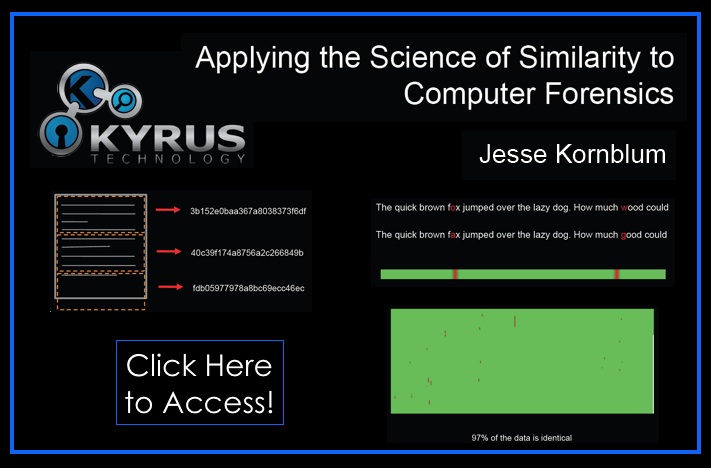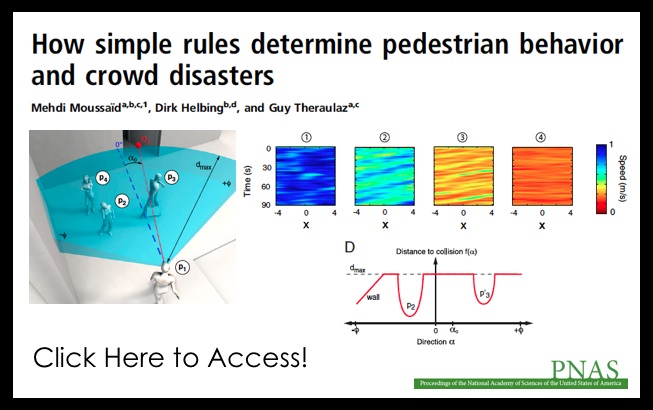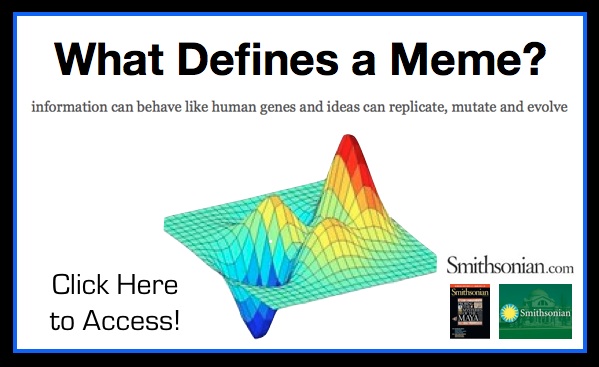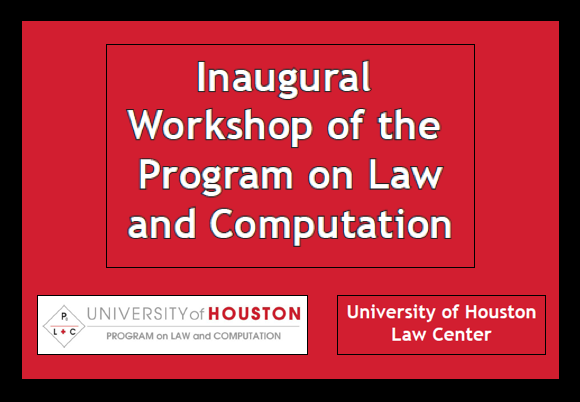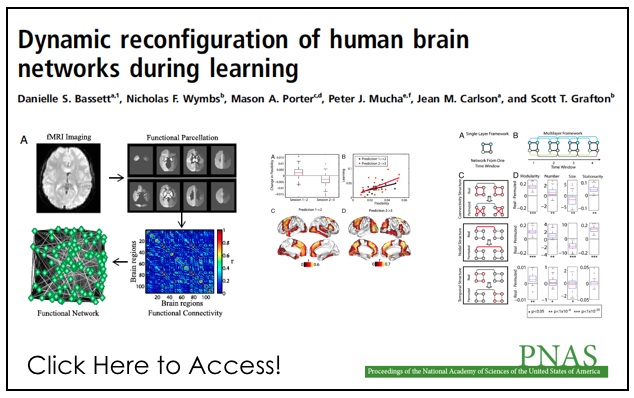
Abstract: “Human learning is a complex phenomenon requiring flexibility to adapt existing brain function and precision in selecting new neurophysiological activities to drive desired behavior. These two attributes—flexibility and selection—must operate over multiple temporal scales as performance of a skill changes from being slow and challenging to being fast and automatic. Such selective adaptability is naturally provided by modular structure, which plays a critical role in evolution, development, and optimal network function. Using functional connectivity measurements of brain activity acquired from initial training through mastery of a simple motor skill, we investigate the role of modularity in human learning by identifying dynamic changes of modular organization spanning multiple temporal scales. Our results indicate that flexibility, which we measure by the allegiance of nodes to modules, in one experimental session predicts the relative amount of learning in a future session. We also develop a general statistical framework for the identification of modular architectures in evolving systems, which is broadly applicable to disciplines where network adaptability is crucial to the understanding of system performance.”
–
Bommarito, Katz & Isaacs-See –> Virginia Tax Review [ Online Supplement and Datasets ]
Our paper An Empirical Survey of the Population of United States Tax Court Written Decisions was recently published in the Virginia Tax Review. We have just placed supplementary materials online (click here or above to access).
Simply put, our paper is a “dataset paper.” While common in the social and physical sciences, there are far fewer (actually borderline zero) “dataset papers” in legal studies.
In our estimation, the goals of a “dataset paper” are three fold:
- (1) Introduce the data collection process with specific emphasis upon why the collection method was able to identify the targeted population
- (2) Highlight some questions that might be considered using this and other datasets
- (3) Make the data set available to various applied scholars who might like to use it
As subfields such as empirical legal studies mature (and in turn legal studies starts to look more like other scientific disciplines) it would be reasonable to expect to see additional papers of this variety. With the publication of the online supplement, we believe our paper has achieved each of these goals. Whether our efforts prove useful for others — well — only time will tell!
Applying the Science of Similarity to Computer Forensics (with lots of other potential applications) [via Jesse Kornblum]
From the talk description: “Computers are fantastic at finding identical pieces of data, but terrible at finding similar data. Part of the problem is first defining the term similar in any given context. The relationships between similar pictures are different than the relationships between similar pieces of malware. This talk will explore the different kinds of similar, a scientific approach to finding similar things, and how these apply to computer forensics. Fuzzy hashing was just the beginning! Topics will include wavelet decomposition, control flow graphs, cosine similarity, and lots of other fun mathy stuffs which will make your life easier.”
I have been quite interested in the “science of similarity” and its application to a variety of questions in law and the social sciences. Whether it concerns the sort of analogical reasoning described by legal scholars such as Edward Levi or Cass Sunstein or cognitive biases such as the availability heuristic (Tversky & Kahneman (1973)), developments in “science of similarity” are of great relevance to theorists in a wide variety of sub-fields.
While there has been lots of skepticism regarding the application of these principles (particularly by those in legal theory), from our perspective it appears as though computer science ∩ psychology/cognitive science stands on the cusp of a new age in the “science of similarity.” I offer the slides above as I found them to be both interesting and useful. Stay tuned for more …

